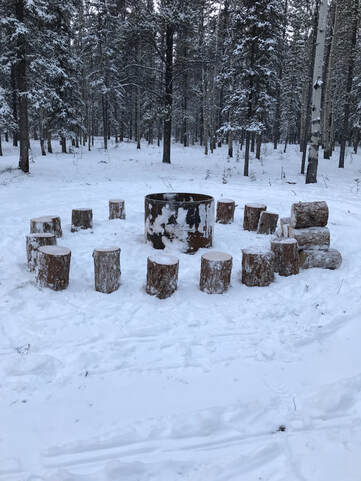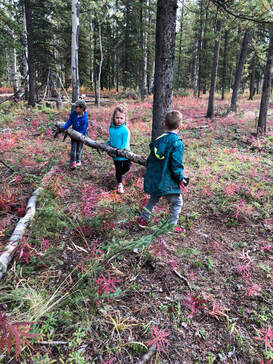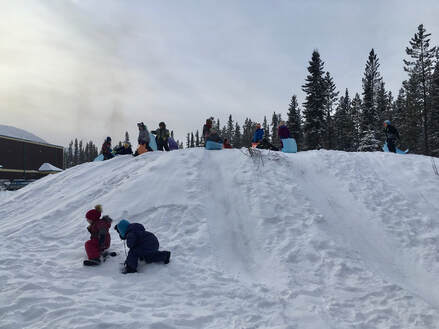Place Based Learning
|
Hidden Valley Elementary takes a Place Based approach to learning. This means that children spend a significant amount of time learning the curriculum through outdoor, hands-on activities and projects in the forest and natural environment.
Place-based education is a revamped "concept" woven into the new curriculum redesign. Place-based education refers to learning experiences that are adapted to the local environment and/or individual context. It places students within the local heritage, culture, and natural environment of their community or school grounds, and uses these concepts as the foundation for teaching mathematics, language arts, and other subject areas across the curriculum. Place-based education is an extension of the classroom. It is a reciprocal process whereby the curriculum is taken into the natural environment and the natural environment is brought into the classroom. Teaching is purposeful and planned. Scaffolding has been put in place to establish expectations for students being outdoors and respecting the environment and each other. |
Learning in Nature
Learning occurs not only in the classroom but also in the local woods, surrounding areas, play ground, and nearby environments. Students visit these outdoor places regularly. During these outings students explore a combination of play, inquiry, experiential, and place based learning connected to the curriculum and their interests. Activities are inspired and influenced by the seasons, weather, landscapes, animals, vegetation, tools, and other natural factors and elements. Students work individually and collaboratively to create, solve problems, reflect, communicate thinking, build trust, and explore ideas. They work along side the teacher, who guides and supports learning. Learning is tied to the land and interwoven with Yukon First Nations concepts and pedagogy.
Learning Types
Inquiry: a form of learning guided by students questions and ideas rather than the teachers. Students investigate their questions about the world and the teacher facilitates these investigations by providing the resources, materials, and opportunities to do so.
Experiential: learning that is hands on and involves the student reflecting on the process (doing). Students build on what they know and make connections to new learning.
Place Based: see above
Play: children use play to make sense of the world around them and bring meaning to unknown or unsure constructs and concepts. Play supports social, cognitive (thinking), confidence and emotional development.
Note: Procedures for assessing and reporting on student progress follow the guidelines laid out by the Yukon Ministry of Education, in conjunction with the schools yearly reporting schedule. This schedule is communicated to families at the beginning of each year.
Learning Types
Inquiry: a form of learning guided by students questions and ideas rather than the teachers. Students investigate their questions about the world and the teacher facilitates these investigations by providing the resources, materials, and opportunities to do so.
Experiential: learning that is hands on and involves the student reflecting on the process (doing). Students build on what they know and make connections to new learning.
Place Based: see above
Play: children use play to make sense of the world around them and bring meaning to unknown or unsure constructs and concepts. Play supports social, cognitive (thinking), confidence and emotional development.
Note: Procedures for assessing and reporting on student progress follow the guidelines laid out by the Yukon Ministry of Education, in conjunction with the schools yearly reporting schedule. This schedule is communicated to families at the beginning of each year.
Risky Play
|
When engaged in learning outdoors there are always a variety of risks at hand and teachers are vigilant before, during, and after activities to mitigate and reflect on these risks. Students safety is of the upmost importance to teachers. However, avoiding all risks and hazards is not the goal. Allowing students to engage in "risky play and activities" supports physical and mental development, while allowing children to understand their own limitations and build confidence. Children are often more aware of their own abilities than we give them credit. Teachers must support them and teach them how to assess the risks and determine safety measures.
Mitigation Examples Before:
During:
After:
|
Forest Schools Canada. (2014). Forest and Nature School in Canada.


